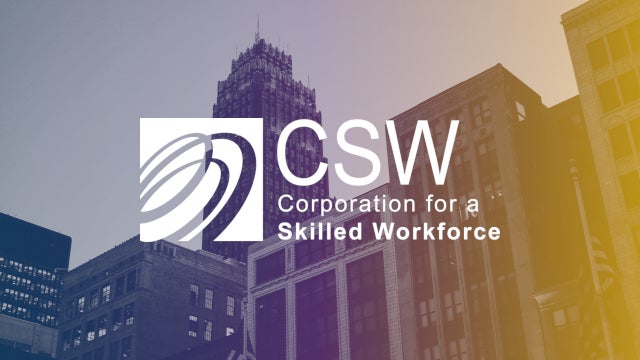Earlier this month, Washington Governor Jay Inslee signed into law a bipartisan plan to guarantee family and medical leave to workers in the state. Importantly, this plan includes a provision that allows self-employed workers to buy into the system. As our national conversation on family and medical leave heats up, policymakers should learn from state experiences and ensure that these programs include independent workers.
Working people across the country struggle every day to balance their work and family responsibilities. Illness, the birth or adoption of a child, or taking care of a family member can require extended absences from work.
For workers and families today, balancing work and family responsibilities has become more difficult than it was for previous generations. Fully two-thirds of households today include two working parents, and the percentage of households that are led by single-mother or fathers is rising. And with an aging population, American families face increasing eldercare needs.
The U.S. is the only high-income country and one of only a few countries in the world that does not provide guarantee paid leave. Other countries that do not provide paid leave include New Guinea, Suriname, and a few South Pacific island nations, while 50 countries provide over six months of paid maternity leave. Although many private employers and a few states offer paid leave plans, only 14 percent of civilian workers are provided formal access to paid parental leave.
This situation has sparked a national discussion over paid leave and, in certain states, there has been some recent legislative progress. New York and Washington instituted state level mandatory paid leave programs in 2016 and 2017, respectively — becoming just the 4th and 5th states to do so, along with the District of Columbia. President Trump’s recent budget includes a proposal for six weeks of guaranteed paid parental leave administered through the Unemployment Insurance system. In a letter to the President last week, a group of 100 House Democrats called for 12 weeks of paid family and medical leave, echoing the FAMILY Act sponsored by Rep. DeLauro in the House and Sen. Gillibrand in the Senate. Earlier this spring, an AEI-Brookings led partnership of liberal and conservative academics published a report proposing eight weeks of paid parental leave.
Unfortunately, paid leave programs are often designed for workers in traditional, stable, full-time employment. Work history requirements, firm size restrictions, and limiting eligibility to those in W2 employment can end up excluding independent workers by reinforcing the difference between traditional and independent workers. For example, New Jersey’s paid leave program is only available to those workers with at least 20 weeks of covered employment under state unemployment law, and workers must have earned at least $168 a week or $8,400 during the base period. Because of the way it would be administered, President Trump’s proposed national paid parental leave program appears to be limited to W2 workers. Similarly, the AEI-Brookings working group proposal for paid parental leave would exclude both self-employed workers and traditional W2 workers who have been working at a job for less than a year. The only existing precedent for leave policy at the national level — the Federal Family and Medical Leave Act, which provides 12 weeks of unpaid leave — excludes self-employed workers, employees at small businesses, and many part-time employees (it should be noted that the main benefit of unpaid leave is to provide job-protection, which may not make sense for independent workers who are their own boss).
Omitting independent workers from paid leave programs is problematic for a few reasons. The independent workforce is growing rapidly — a recent study found that the rise in non-traditional work accounted for 94 percent of total net job growth over the last decade. Another recent study from the Rockefeller Foundation found that there are approximately 36 million independent workers, or roughly a quarter of the workforce, and that this percentage could increase to one-third to one-half by 2020. The nature of independent work often brings with it greater exposure to economic insecurities, such as income volatility and inconsistent schedules and pay — challenges which are linked to insufficient savings, housing and food instabilities, and even negative child development outcomes. Compounding that, independent workers lack many of the benefits and protections designed to combat the very insecurities to which they are particularly vulnerable.
There are positive examples of paid leave programs that do include independent workers. California’s paid leave program, which has been running for over ten years as part of the state’s temporary disability insurance program, allows self-employed workers to opt in to the system. Recently enacted paid leave programs in New York, Washington State, and Washington, DC — set to take effect in 2018, 2019, and 2020 respectively — follow California’s example and include provisions for self-employed workers to opt-in. On the national level, the FAMILY Act proposal for paid family and medical leave includes all workers regardless of company size, and would allow the self-employed to participate.
Independent workers deserve a social insurance system that allows them to take care of a family member or medical emergency without also having to deal with a significant loss of income. As the recent AEI-Brookings report notes, paid leave also provides many economic, social, and health benefits that extend beyond the walls of the home: access to paid leave has been associated with better health outcomes for children and families, improved cognitive development for children, and both greater workforce participation and higher earnings among other benefits (see the AEI-Brookings report for more sources). All of these factors are important to economic growth and resiliency today and in the future.
We applaud policymakers and academics at the state and federal level that are developing proposals to provide working families with access to paid leave. But as policymakers consider how to better meet the needs of workers today and tomorrow, they should remember that our workforce is changing, and policies should be designed to include independent workers — not just traditional, full-time W2 employees.

